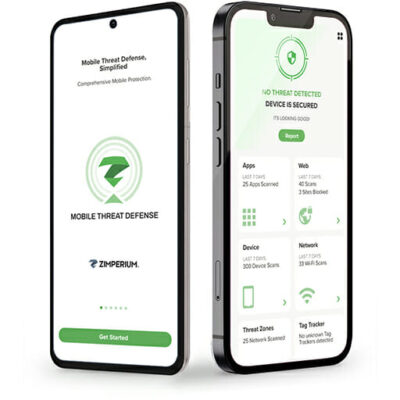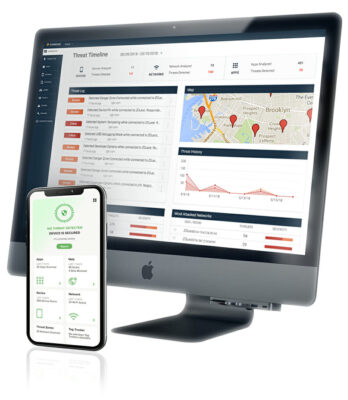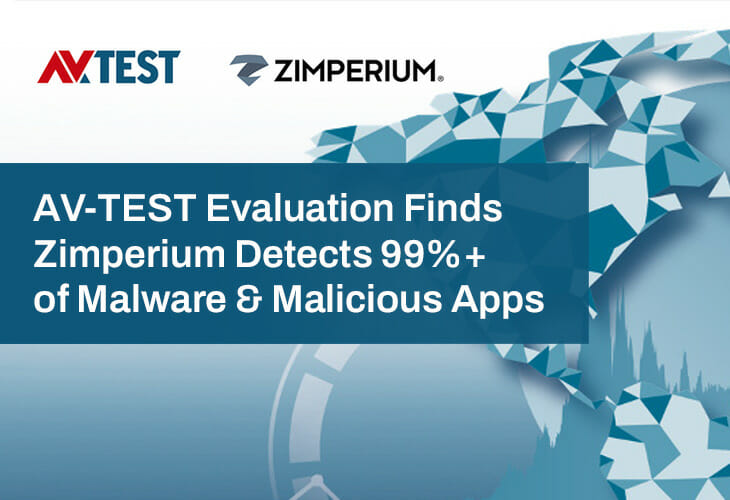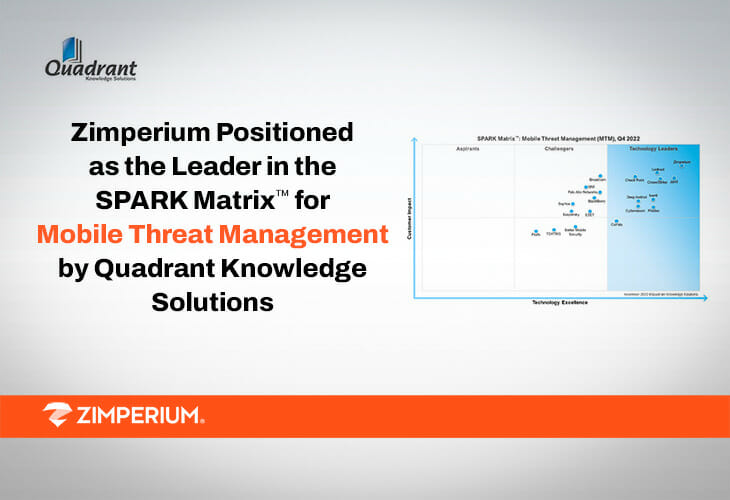Zimperium Mobile Threat Defense (MTD)


Secure Your Mobile Endpoints
Zimperium Mobile Threat Defense (MTD) is a privacy-first application that provides comprehensive mobile security for enterprises. It is designed to protect corporate-owned and/or BYOD (bring-your-own-device) from advanced persistent threats across four categories: device, network, phishing, and app attacks.
Powered by Machine Learning
As the mobile attack surface continues to expand and evolve, so does Zimperium’s machine learning-based engine. Zimperium MTD detects known and unknown threats by analyzing the behavior of a mobile device and can accurately identify mobile system deviations, applications that behave as malware, anomalous network traffic, and advanced phishing attacks. Further, the machine learning is delivered on-device, securing it even if the endpoint is not connected to the network.


Privacy-Focused, Enterprise Mobile Security
With a privacy-by-design approach, Zimperium MTD provides users with a transparent experience by delivering customizable user settings and insight into what data is collected and used for threat intelligence. Because Zimperium MTD’s detection is done on-device, private information is never sent to the cloud.
Scalable Enterprise Mobile Security
Zimperium MTD can be used as a stand-alone tool or integrated with a MDM/EMM for managed devices. When integrated with a MDM/EMM, Zimperium MTD sends alerts about detected threats to the MDM/EMM, and the MDM/EMM remediates the risk based on predefined rules. Zimperium MTD works seamlessly with leading MDM/EMM solutions and is the only mobile threat defense solution that can simultaneously integrate with multiple MDMs/EMMs, which is particularly helpful when transitioning solutions.
Zimperium MTD can also be used for unmanaged devices with mobile application management (MAM). With MAM-enabled apps, when a user launches a work application, such as Microsoft O365, on a mobile device, the application only permits access when mobile threat defense is running on the device.


A Vital Component of Comprehensive Cybersecurity
Zimperium MTD also provides critical mobile forensics necessary for security teams to assess and respond to security incidents, reducing the mean time to remediation. Through integrations with the leading MDM/EMM/UEM, SIEM, SOAR, and XDR systems, Incident Response teams finally have visibility into mobile threats and risks. The unmatched forensics provided by Zimperum MTD prevent a compromised device from turning into an outbreak. By collecting forensic data on the device, network connections, and malicious applications, security operations teams are able to review forensics and minimize risks.



